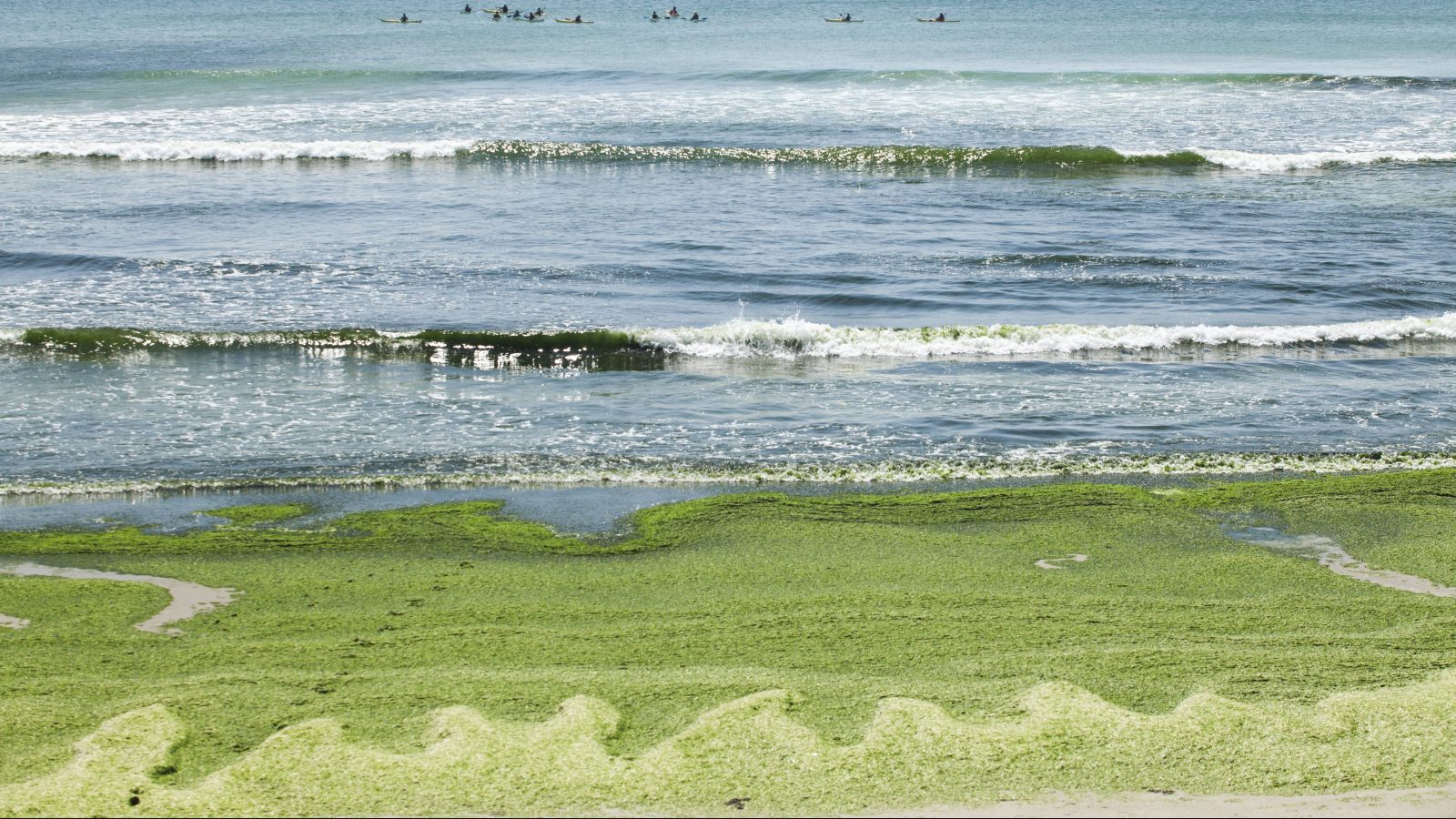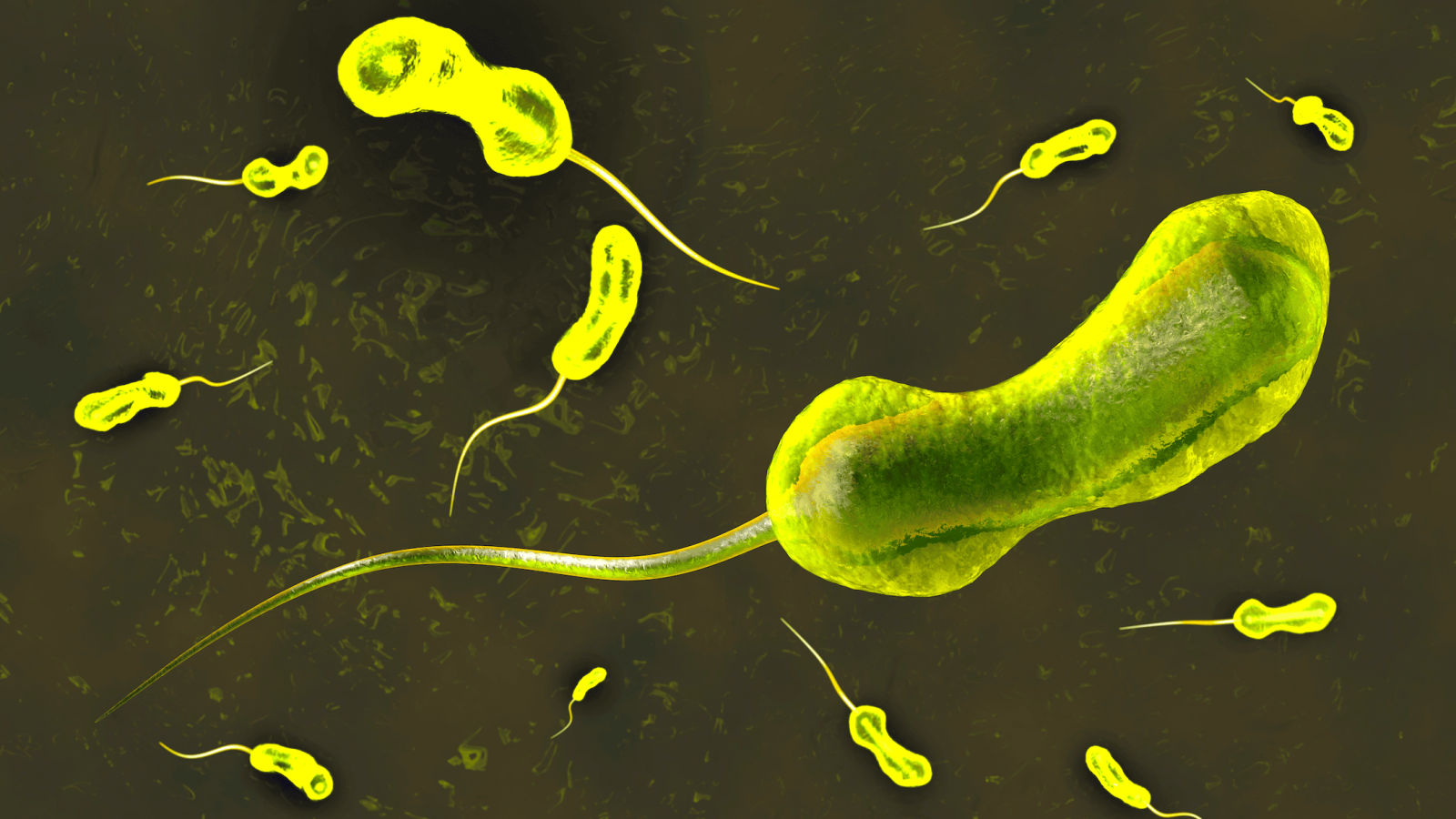The planet’s weather over the past three years has been dominated by a natural cycle called La Niña — an oceanic phenomenon that results in below-average sea-surface temperatures in the central and eastern tropical Pacific Ocean, and lower average temperatures worldwide. But forecasters are predicting that, sometime between this summer and the end of the year, La Niña’s opposite extreme, El Niño, will take over.
That seismic shift could have major implications for human health, and specifically the spread of disease. El Niño will increase temperatures and make precipitation more volatile, which in turn could fuel the spread of pathogen-carrying mosquitoes, bacteria, and toxic algae. It’s a preview of the ways climate change will influence the spread of infectious diseases.
“The bottom line here is that there are a range of different health effects that might occur in the setting of an El Niño,” Neil Vora, a physician with the environmental nonprofit Conservation International, told Grist. “That means we have to monitor the situation closely and prepare ourselves.”

As with La Niña, the effects of an El Niño extend far beyond a patch of above-average warmth in the Pacific. Parched regions of the world — like Chile, Peru, Mexico, and the American Southwest — are often bombarded with rain and snow. Some other parts of the world, including the Northeastern U.S., the Amazon, and Southeast Asia’s tropical regions, on the other hand, don’t see much rain at all in an El Niño year. The planet could temporarily become 1.5 degrees Celsius (2.7 degrees Fahrenheit) warmer, on average, than in preindustrial times — a threshold scientists have long warned marks the difference between a tolerable environment and one that causes intense human suffering.
These patterns are a boon for certain vector-borne illnesses — defined as infections transmitted by an organism (usually an arthropod, a category that includes insects and arachnids). Regions of the world that will experience longer wet seasons because of El Niño, many of which are in the tropics, may see an increase in mosquito-borne illnesses, according to Victoria Keener, a senior research fellow at the East-West Center in Honolulu, Hawaii, and a coauthor of the U.S.’s upcoming Fifth National Climate Assessment. “El Niño will mean a longer breeding season for a lot of vectors and increased malaria potential in a lot of the world,” she said.
A 2003 study on the intersection of El Niño and infectious disease showed spikes in malaria along the coasts of Venezuela and Brazil during and after El Niño years. The study looked at more than a dozen cycles between El Niño, La Niña, and the cycle’s “neutral” phase, which taken together are known as the El Niño-Southern Oscillation, or ENSO. The researchers, who analyzed data dating back to 1899, also found an increase in malaria during or post-El Niño in Colombia, India, Pakistan, and Peru. Cases of dengue, another mosquito-borne illness, increased in 10 Pacific islands.
The manner in which El Niño impacts mosquitos and the diseases they carry is varied and often difficult to accurately calculate, said Christopher Barker, an associate professor in the Department of Pathology, Microbiology, and Immunology of the University of California Davis School of Veterinary Medicine. Mosquitos breed in warm, wet conditions. But too much water in the form of flooding rains can wash away mosquito larvae and ultimately contribute to a decrease in mosquito populations. As the planet shifts into an El Niño year, Barker said the areas to keep a close eye on are ones where moderate or heavy rains are followed by dry, warm months. If the past is any indication, countries like India and Pakistan are especially at risk.
So is California. After years of drought, recent storms in the Golden State have generated a lot of flooding and cooler-than-normal conditions. If that leads into a hotter-than-normal summer, “that may set things up for bad conditions for West Nile virus,” Barker said of the mosquito-borne illness that is becoming more prevalent in the U.S.

El Niño is projected to bring unusual warmth to the Pacific Northwest and the northern Great Plains. Kristie L. Ebi, a professor of global health at the University of Washington, said warmth is often the determining factor in how far north vectors of disease move. “We know that mosquitoes don’t control their internal temperature,” she said. “When it’s hotter they’re going to see opportunities to move into new ranges. If the El Niño lasts long enough they get established and find habitat, then you can see an expansion in geographic range.” A study on the link between infectious disease in the U.S. and El Niño, published in 2016, found a link between tick-borne illnesses such as rickettsiosis — an infection that can damage the brain, lungs, and skin — and El Niño in the Western U.S.
Vibrio cholerae, the water-borne bacteria that causes cholera, is another area of concern, experts told Grist — both in areas that see more rain during El Niño and those that see less rain. Flooding aids the spread of the cholera bacteria from open sewers and other waste containers — still prevalent in many underdeveloped parts of the world — into drinking water systems. Drought also leads to an uptick in cholera cases in poor countries, because restricted access to fresh water forces people to use less water for personal hygiene practices like handwashing and turn to unsafe sources of drinking water. “Cholera can be a devastating infectious disease that causes a very severe diarrhea that can dehydrate people so badly that they die,” Vora said. “In the setting of an El Niño extreme weather event, there might be impacts on sewage systems or on access to clean water, and that can lead to the spread of water-borne diseases such as cholera.”
Research shows El Niño has had an impact on the transmission of cholera in Bangladesh and eastern India. Water-borne illnesses writ large increase in the western Pacific islands during an El Niño year, Keener said, because El Niño in that region is associated with drought. “People start conserving water and using it for drinking instead of hygiene, so you see an increase in things like pink eye, gastrointestinal issues, just a whole host of health issues,” she said.

Poisonous algae is a consideration in regions where El Niño spurs above-average sea-surface temperatures. Algae thrive in warm water, where their poisons accumulate in water-filtering organisms such as shellfish. Humans who consume that shellfish or are otherwise exposed to the algae can develop symptoms like abdominal cramping, rashes, vomiting, and even, in extreme cases, death. A study from 2020 links El Niño to a pair of harmful algal blooms in the southern hemisphere, commonly referred to as the “Godzilla-Red tide event,” which poisoned four people and led to massive economic losses in Australia and Chile.
The study noted that these blooms, sparked by high sea-surface temperatures brought on by an El Niño, were a “dress rehearsal” for future outbreaks of poisonous algae influenced by climate change. The coming El Niño may bring about a Godzilla round two. “I wouldn’t be surprised with warmer temperatures if you see an association with harmful algal blooms,” Ebi said, noting that El Niño’s signature high temperatures are one of the phenomenon’s most widespread and impactful health-related consequences.
The premise that El Niño years offer a glimpse of what a future permanently altered by climate change might look like is one governments should take seriously. Public health institutions are doing a subpar job of monitoring infectious diseases, pinpointing where they’ll crop up, and preparing communities for an uptick in environmental pathogens. The coming ENSO shift may further illuminate those weaknesses. “We have few ideas about what will move and what will pop up when there is any kind of climate or weather perturbation,” Daniel R. Brooks, coauthor of The Stockholm Paradigm: Climate Change and Emerging Disease, told Grist.
Even public health agencies in the U.S., one of the richest countries in the world, do a poor job of assessing infectious disease risk, monitoring pathogens as they move through the environment, and testing individuals for increasingly common diseases such as West Nile virus, especially when they’re asymptomatic. “This means the real threat is unpleasant surprise,” Brooks said. “We know a bit about some already known pathogens, but that is not good enough.”



